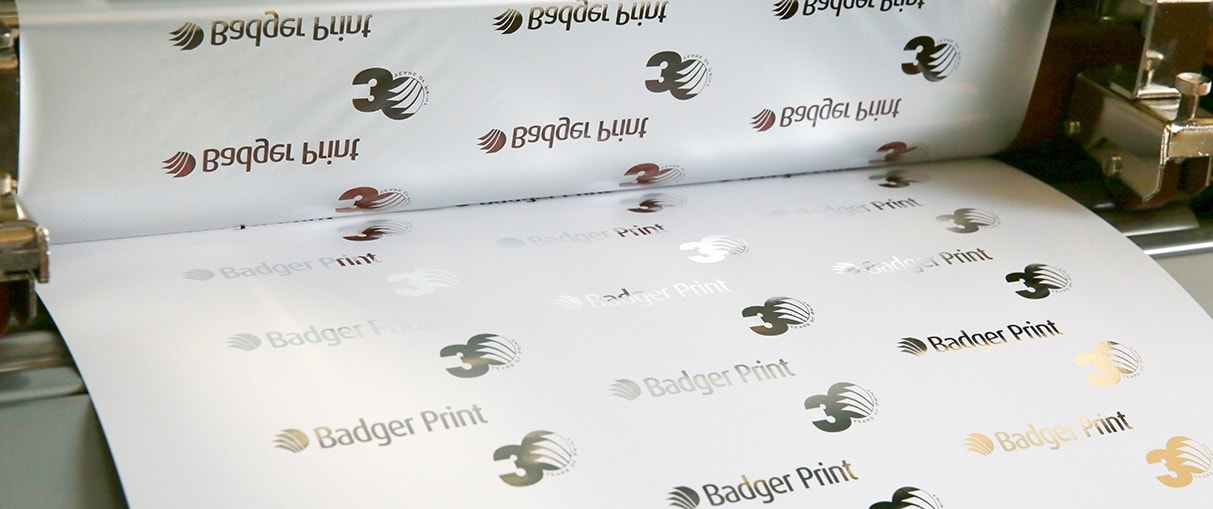Print continues to be an effective marketing tool but, as a small business, it’s important to find ways to gain the most from your print budget without compromising on quality. Here are some considerations for you to bear in mind:
1. LITHO V DIGITAL
In a nutshell litho printing uses wet ink and printing plates, and digital printing uses toners on a press similar to a giant office printer. Due to the set up costs and extra time needed for the ink to completely dry before finishing, digital printing is more cost-effective for shorter runs and litho printing for longer runs.
2. PAPER STOCK
The range of paper stocks available is huge and factors such as opacity, colour, texture and weight will all affect the look of the finished printed item as well as the cost. Depending on what your print is for, the look and feel of it will project a certain image which needs to fit with your objectives. Another consideration is the weight if you’re posting items out.
3. QUANTITIES
To make sure you’re ordering the most economical quantity, always ask for prices for a few quantities and work out the price per piece. Most of the cost in printing is setting up your job so once it’s on the press, especially with litho printing, running an extra 500 copies will not cost much more. Adding an additional quantity will cost a lot less than printing the whole job again two months later.
4. AVOID RESTRICTIVE INFORMATION
Wherever possible, avoid including dates and prices or any other information that could change regularly. Keeping content as flexible as possible will make your print last longer. Alternatively, you could order smaller digital runs or separate information that could change e.g. insert a price list into a brochure or refer people to your website for prices.
5. REDUCE DESIGN COSTS
A good brief will keep the cost of design to a minimum. Try to think how you’d like the recipient to see your business, what you’d like to tell them and then what you’d like them to do next. Collect any examples of colour, style or format you particularly like and aim to give the designer a head start on the design process.
6. IMAGES
On the subject of design, good quality images are essential. If you’re planning lots of different projects, sometimes it’s worth hiring a photographer to take photos that you can use across all of your marketing rather than buying stock photos. The added benefit is that you’ll achieve a more personalised look that’s specific to your company.
7. THE RIGHT TOOL FOR THE JOB
To make sure you’re ordering the right tool for the job, it’s useful to think about what you hope it will achieve. Instead of producing an expensive brochure with reams of information, perhaps a simple leaflet with key points and a reference to your website for further information will work best. Or even printing your services on the back of your business card instead of having a separate flyer to hand out at an event would be more appropriate.
8. MAIL FULFILMENT
For Direct Mail campaigns, ask your printer if they offer mail fulfilment services as the cost of postage can be discounted by up to 15%. Another useful tip for this sort of campaign is to test the market with a smaller campaign to check the return rate and make tweaks as needed.
9. ZERO RATED VAT
Did you know that some print is zero rated for VAT? As per ‘VAT Notice 701/10: zero-rating of books and other forms of printed matter’, the following items do not require VAT: Pamphlets, Folded Leaflets, leaflets, flyers, newsletters, newspapers, brochures, booklets, books, magazines, catalogues, directories, manuals, sheet music, maps and timetables.
Need more print marketing advice? Please contact us at our state-of-the-art commercial print facility, located between Telford and Bridgnorth.


 High Quality Print
High Quality Print
 Free Local Delivery
Free Local Delivery
 Quick Turnaround
Quick Turnaround
All the latest in print and design
Plus helpful tips and ideas to give you plenty of inspiration